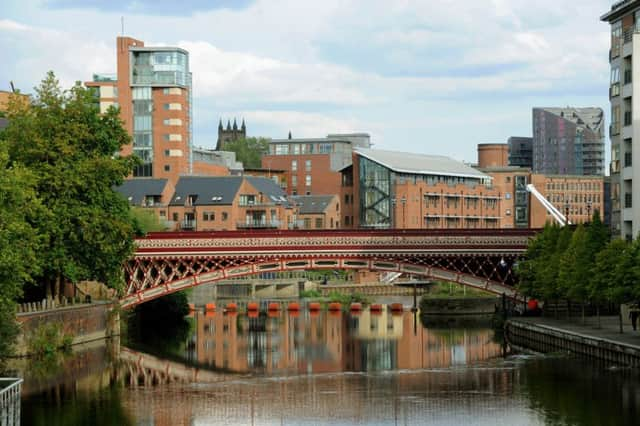Greg Wright: How the Leeds waterfront can be revived to boost economic growth


They were symbols of decay which suffered from terrible neglect. Waterfronts that once teemed with commercial life fell silent in the closing years of the 20th century. Developers scratched their heads and left them to be ravaged by time and the elements. As a young reporter, I only visited the waterfront in the aftermath of some tragedy.
But it’s time to go back to the waterfront with an open mind. These waterways brought people and goods into the heart of the city in the days when the road network resembled Flanders mud in bad weather.
Advertisement
Hide AdAdvertisement
Hide AdThey can enjoy a renaissance as places to live, work and ponder.
These points were reinforced earlier this week, when I bumped into Mark Goldstone, the head of business representation and policy at West & North Yorkshire Chamber of Commerce.
As we strolled back into the city after attending The Great Northern Conference at New Dock Hall, Mark outlined some of the plans that aim to encourage more people to spend time by the waterfront.
Tourists arriving in Leeds for the first time by train, for example, would be more likely to explore the waterfront if it was full of attractions.
Advertisement
Hide AdAdvertisement
Hide AdThe Leeds Waterfront Enhancement Fund, which is supported by Leeds City Council and the chamber of commerce, has the grand aim of “reinstating the River Aire into the consciousness of city users”.
It is a noble ambition. The fund can support activities that enhance the “accessibility, attraction and activity” of the waterfront. The river, which once formed the southern boundary of Leeds city centre, is now at the centre of commercial life.
If we want cities like Leeds to keep growing we must ensure that the waterfront is a friendly place.
“With all of the south bank schemes coming to the market, plus the infilling of sites along the north bank, the river will now be at the heart of the city centre,’’ said Mark.
Advertisement
Hide AdAdvertisement
Hide Ad“In places, it is really pleasant but some areas need working on,’’ he added, “We need to improve the lighting, make it feel safer at all times of the day, and make it really obvious that it is a public right of way.
“There is strong evidence that housing and office schemes next to high quality waterfronts command a premium price.”
A study from Knight Frank suggested residential waterfront properties commanded an 80 per cent premium.
Mark added: “We ought to be really proud of the city’s industrial heritage.
Advertisement
Hide AdAdvertisement
Hide Ad“There are some fantastic spaces along the waterfront too, which could be so much more appealing and give people places to have lunch, view cultural activities and public art or simply just pause for breath.”
There is something soothing about spending time close to water. But it’s worth remembering that rivers and canals served the needs of commerce for generations. The increased use of water taxis could play at least a minor role in reducing the congestion on our roads.
We will all benefit if more people decide to live and work overlooking waterfronts like Leeds because it will reduce the traffic which is causing gridlock on major roads at peak times.
This, over time, will bring environmental benefits. It’s estimated that 40,000 deaths a year are directly attributable to poor air quality.
Advertisement
Hide AdAdvertisement
Hide AdAnybody who suffers from asthma or similar conditions will know that the quality of the air we breathe can be a matter of life and death.
If we can build communities around our rivers, air quality will gradually improve and life will become a little less fraught.
It will not be easy. Perhaps the most significant task will be ensuring robust flood protection measures are put in place.
This might sound like a utopian vision which will require a large investment of time and money.
Advertisement
Hide AdAdvertisement
Hide AdBut the handsome, resilient structures that still adorn our waterfronts were not built by timid men and women, who flinched in the face of adversity. We must find inspiration from at least a little of their wisdom.